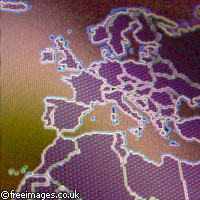Getting to the heart of the Earth's core
A Franco-American team of scientists has shed new light on the processes taking place at the very heart of our planet. The findings increase our understanding of how the different layers of the Earth interact with one another. The Earth's core is also important as it is here that the planet's magnetic field is generated. The work, which is partly funded by the EU, is published in the latest edition of the journal Nature. At the centre of the Earth lies our planet's inner core, a ball of solid iron some 2,400 metres across. Analyses have revealed that this inner core is not symmetrical; in the eastern hemisphere, seismic waves travel relatively fast, while in the western hemisphere they move faster and behave differently depending on their direction of travel. Until now, the reasons for this asymmetry were a mystery. In this latest piece of research, the scientists suggest that it could be due to thermochemical variations in the Earth's mantle being transferred across the liquid outer core to the inner core. The layer of the Earth immediately below the crust is called the mantle. This layer loses heat to the crust, and gains heat in turn from the liquid outer core of the Earth. Meanwhile, this outer core loses heat to the mantle. Furthermore, it loses heat more rapidly in areas where the mantle is cooler, compared to areas where the mantle is hotter. Like the atmosphere, the Earth's core is subjected to the Coriolis force that is caused by the rotation of the Earth, and the lateral temperature differences give rise to 'thermal winds', similar to those which exist where the land meets the sea. According to the researchers, these thermal winds are responsible for the 'double face' of the inner core. In short, the research highlights the way the Earth's different layers interact with one another, and how the outer core acts as a go-between for what is happening in the mantle and what is happening in the inner core. EU support for the research came from a Marie Curie Intra-European grant.
Countries
France, United States



